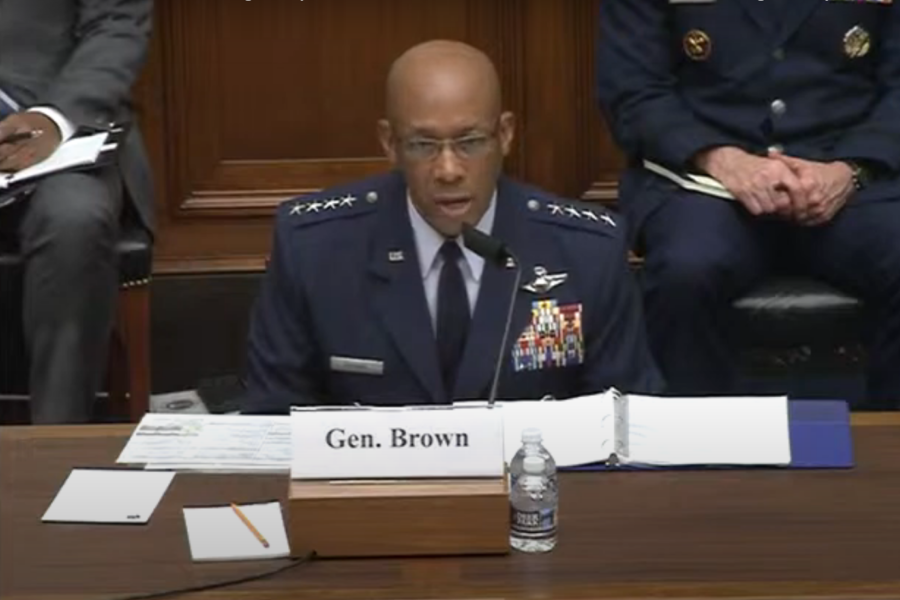The Next-Generation Air Dominance (NGAD) system—the fighter that will succeed the F-22—will have ground attack capability possibly for its own protection, Air Force Chief of Staff Gen. Charles Q. Brown Jr. told lawmakers June 16.
Testifying before the House Armed Services Committee on the fiscal 2022 budget request, Brown said he wants the NGAD to have “multirole” capability, emphasizing that the aircraft’s primary role will be air dominance but with the ability to strike ground targets as well.
Compared to the F-22, Brown said the NGAD will have “increased weapons load [and] … increased range” necessary to operate at the great distances required in the Indo-Pacific theater.
The NGAD will have “some air-to-ground capability to ensure, one, that it can survive, but also to provide options for our air component commanders and for the Joint Force,” Brown said, suggesting that the NGAD will be able to shoot at air defense systems that threaten it.
Retired Gen. James M. Holmes, former of Air Combat Command, has said there may be two variants of NGAD: one with long range and payload for the Indo-Pacific and one more oriented to the relatively short ranges between possible battle areas in Europe.
The NGAD is described as a “family of systems” that allows the Air Force to control the sky at times and places of its choosing, but its centerpiece will be a fighter aircraft. Other parts of the system are likely to be unmanned escort aircraft to carry extra munitions and perform other missions.
During the hearing, Brown also confirmed that the Air Force’s reason for not including more F-35s on its unfunded priorities list is that it prefers to wait for the more advanced Block 4 version of the jet.
“The F-35 we have today is not necessarily the F-35 we want to have that goes into the future, that will have Tech Refresh 3 and Block 4 against an advancing … Chinese threat,” Brown said.
The Air Force has put more F-35s on its unfunded priority list for the last several years, and Congress has obliged, adding 12 jets every year to the Air Force’s request for 48. However, members of the HASC in previous hearings this year have said they would fight against adding more F-35s to USAF’s request because the previous adds have exacerbated parts shortages and lowered the aircraft’s mission capable rates.
Brown emphasized that, while there were F-15EXs in the unfunded priority list, that move is meant to swiftly try to reduce the average age of the fighter fleet, which now is about 29 years old.
“Even with the unfunded priority list, the majority of new fighters we’re going to buy will be F-35s,” Brown said. But the Air Force did put F-35 sustainment items in the list because improvement in this area is a critical priority, he said.
Internal documents obtained by Air Force Magazine have shown the service intends to reduce its F-35 buy through the rest of the Future Years Defense Program to about 43 per year, in anticipation of Block 4 aircraft, which start coming off the production line sometime after 2025. The Government Accountability Office recently reported further slips in that timeline.
Editor’s note: This story was updated at 3:13 p.m. June 18 to correctly attribute the statement that there could be two variants of NGAD to former Air Combat Combat boss retired Gen. James M. Holmes.
